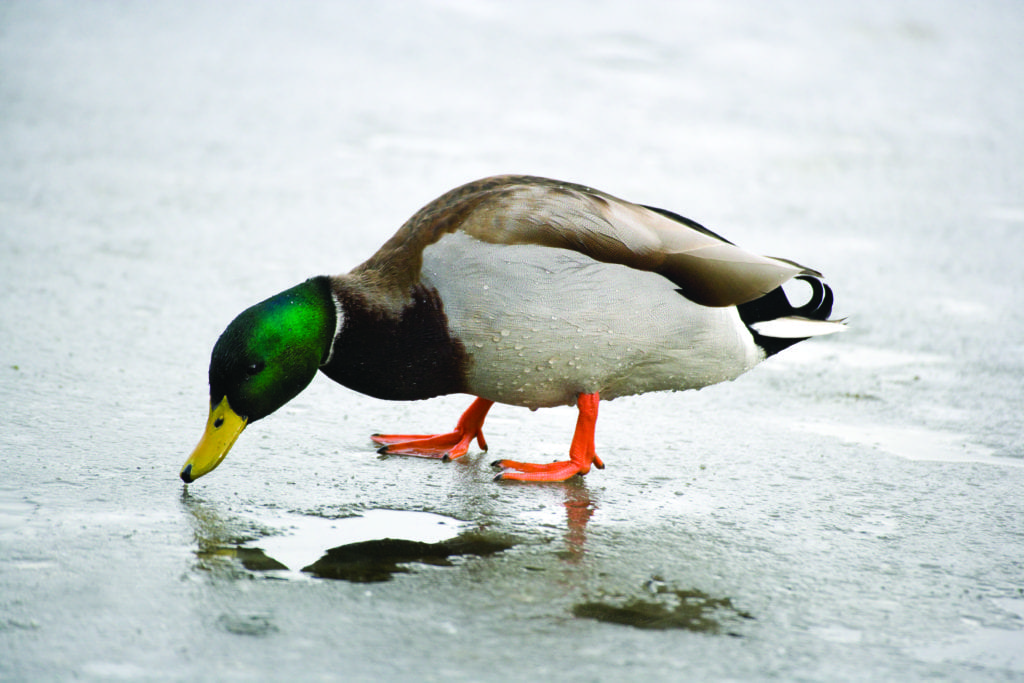Duck Feet (October 29)


On a cold winter day, you may notice a duck walking on ice and another walking in snow. How is it possible that their feet don’t freeze and fall off – given their bare legs and feet? Like many birds, ducks have a unique warming system called a “countercurrent” heat exchanger inside their legs and feet.
Engineers have long understood that when two pipes are touching each other with the fluid flowing in the same direction, half the heat is transferred to the other pipe’s fluid. If, however, the two fluids move in opposite directions, nearly 100% of the heat can move from the warmer pipe to the colder pipe. That is what happens in ducks! The pipe (artery) carrying warm blood runs down to the feet and passes next to the pipe (vein) with the cold blood coming from the feet. When the exchange takes place the heated blood transfers about 95% of its heat before it reaches the feet. In engineering design, this is called a countercurrent heat exchanger. Combine this with the legs and feet made mostly of bones/hard parts, and you get feet that neither freeze nor waste heat energy. God in His wisdom created the countercurrent heat exchanger long before engineers discovered the principle.
The next time you see a duck or bird standing in snow, tell your friend why birds do not have to wear winter boots. God built into these creatures a countercurrent heat exchanger!
